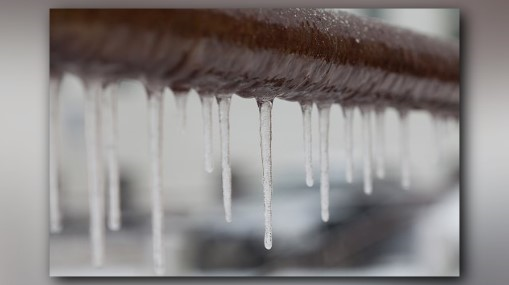Preventing Frozen Pipes in Winter: Essential Tips
Preventing Frozen Pipes in Winter: Essential Tips
Blog Article
They are making several good observations about Preventing and dealing with frozen pipes overall in this post beneath.

Cold weather can ruin your plumbing, especially by freezing pipes. Here's exactly how to avoid it from occurring and what to do if it does.
Intro
As temperature levels decrease, the danger of frozen pipelines boosts, possibly bring about costly repair services and water damages. Recognizing how to stop frozen pipelines is vital for house owners in chilly environments.
Prevention Tips
Shielding vulnerable pipes
Wrap pipelines in insulation sleeves or make use of warmth tape to protect them from freezing temperatures. Focus on pipes in unheated or outside areas of the home.
Home heating methods
Maintain indoor rooms adequately heated, especially areas with plumbing. Open cupboard doors to enable warm air to circulate around pipes under sinks.
How to recognize icy pipelines
Try to find reduced water flow from faucets, uncommon smells or sounds from pipelines, and noticeable frost on exposed pipes.
Long-Term Solutions
Architectural modifications
Think about rerouting pipes far from exterior walls or unheated locations. Add extra insulation to attics, cellars, and crawl spaces.
Upgrading insulation
Buy top notch insulation for pipes, attic rooms, and walls. Proper insulation assists maintain constant temperatures and minimizes the risk of icy pipes.
Shielding Outside Pipes
Garden pipes and exterior faucets
Detach and drain pipes garden pipes prior to winter season. Install frost-proof faucets or cover exterior faucets with protected caps.
Recognizing Frozen Pipes
What triggers pipelines to freeze?
Pipes ice up when revealed to temperatures below 32 ° F (0 ° C) for extended periods. As water inside the pipes ices up, it broadens, taxing the pipeline wall surfaces and possibly causing them to burst.
Dangers and damages
Frozen pipes can result in supply of water interruptions, property damages, and pricey fixings. Ruptured pipes can flood homes and trigger comprehensive structural damages.
Indicators of Frozen Water Lines
Determining frozen pipelines early can avoid them from bursting.
What to Do If Your Pipelines Freeze
Immediate activities to take
If you think icy pipes, maintain faucets open to soothe pressure as the ice melts. Utilize a hairdryer or towels soaked in warm water to thaw pipes gradually.
Conclusion
Protecting against frozen pipes calls for proactive actions and quick actions. By understanding the reasons, indicators, and preventive measures, home owners can protect their pipes throughout cold weather.
5 Ways to Prevent Frozen Pipes
Drain Outdoor Faucets and Disconnect Hoses
First, close the shut-off valve that controls the flow of water in the pipe to your outdoor faucet. Then, head outside to disconnect and drain your hose and open the outdoor faucet to allow the water to completely drain out of the line. Turn off the faucet when done. Finally, head back to the shut-off valve and drain the remaining water inside the pipe into a bucket or container. Additionally, if you have a home irrigation system, you should consider hiring an expert to clear the system of water each year.
Insulate Pipes
One of the best and most cost-effective methods for preventing frozen water pipes is to wrap your pipes with insulation. This is especially important for areas in your home that aren’t exposed to heat, such as an attic. We suggest using foam sleeves, which can typically be found at your local hardware store.
Keep Heat Running at 65
Your pipes are located inside your walls, and the temperature there is much colder than the rest of the house. To prevent your pipes from freezing, The Insurance Information Institute suggests that you keep your home heated to at least 65 degrees, even when traveling. You may want to invest in smart devices that can keep an eye on the temperature in your home while you’re away.
Leave Water Dripping
Moving water — even a small trickle — can prevent ice from forming inside your pipes. When freezing temps are imminent, start a drip of water from all faucets that serve exposed pipes. Leaving a few faucets running will also help relieve pressure inside the pipes and help prevent a rupture if the water inside freezes.
Open Cupboard Doors
Warm your kitchen and bathroom pipes by opening cupboards and vanities. You should also leave your interior doors ajar to help warm air circulate evenly throughout your home.

I'm just very eager about Winter Plumbing Precautions: Preventing Frozen Pipes and I am assuming you enjoyed reading the new blog entry. In case you appreciated our post plz remember to pass it around. Thank-you for taking the time to read it.
About This Report this page